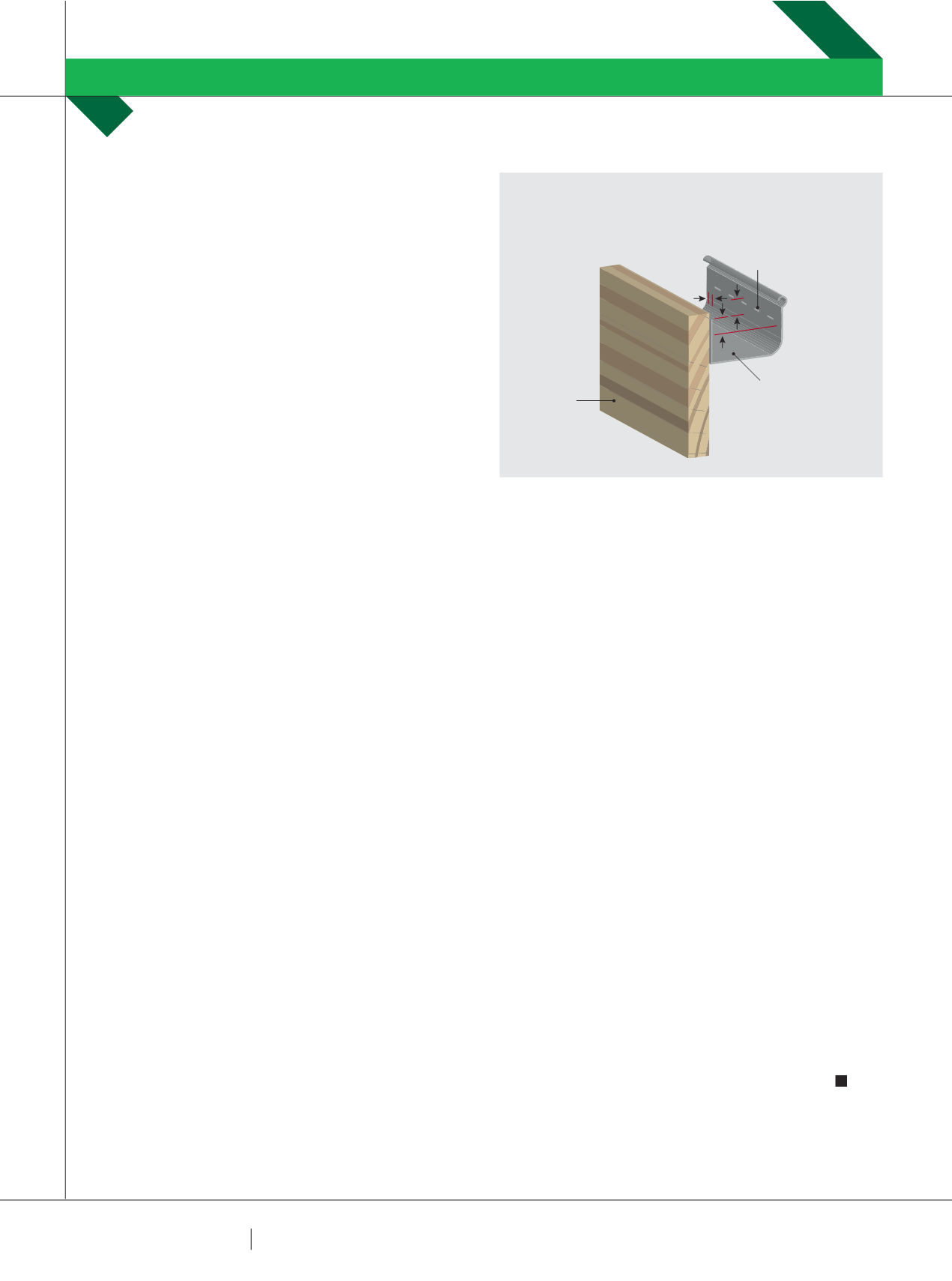

4 2
PLUMBING CONNECTION
SPRING 2015
THIS LED ME TO ASK THE TECHNICAL REPRESENTATIVE FROM
THE VBA THE FOLLOWING QUESTIONS:
PETER COLL:
What is a level gutter?
VBA:
I don’t know, as I understand all gutters must have fall!
PETER COLL:
Can you please tell me what adequate provision
for overflow in external eaves gutter is?
VBA RESPONSE:
That’s easy, Cl 3.5.3.
PETER COLL:
Yes and that directs us to Appendix G and the
only reference to overflow is the following: The top edge of
the back of the gutter not less than h
f
below the top of the
fascia board as shown in Figure G1 (c)-(weir flow over back
of gutter), which is shown in diagram (c).
VBA RESPONSE:
Oh well how do you do that? That is going to
look horrible isn’t it!
PETER COLL:
Where is there reference to overflow slots?
VBA RESPONSE:
Oh they have taken that out?
PETER COLL:
So again what is an adequate provision for
overflow in an external eaves gutter?
VBA RESPONSE:
Well to tell you the truth, I don’t know.
This not only highlights a problem within the VBA but with
the Building Professionals Board, QBCC, BCA and any other
authoritative body around Australia – but it all starts with
Standards Australia.
This is where I put my hand up and admit fault. I was a
member of the WS-014-03 committee who was tasked with
reviewing and amending HB39 and AS/NZS 3500.3: 2015,
which you would have read about in the previous edition
of this magazine. I apologise for not reviewing the whole
standard and fighting to the end, for what I believe to be right.
The last thing I want is for people to have water backflow/
overtopping back into their home and damaging property,
or even worse, causing sickness. But let me make this very
clear – my family has been working in the roofing industry for
40 years and after installing thousands of gutters we have
never had a call back for overtopping.
I wanted to make sure we hadn’t just gotten lucky, so
through my role as Vice-Chairman, I reached out to all of
the members of the Residential Metal Roofing Industry
Association of Victoria (RMRAIV) which represent over 60%
of the Victorian gutter installs. As it turned out, none of the
members had experienced a single case of overtopping. So
why has this become an issue?
I suspect this has come into play as a result of an
insurance company receiving a claim and passing all of
the blame back on the plumber. I am fairly sure it has not
happened to any of the companies I have contacted because
of the fact they all use slotted gutter 90% of the time. I will
try to prove my theory via my diagram above.
I have not studied every gutter on the market so I am
basing my assumptions off the Interline Quad gutter and its
measurements.
a. Distance from the overflow slots to the top of the back of
the gutter
h
f
is 10mm.
b. Each overflow slot is 2mm deep x 25mm long, providing
50mm2 of overflow each.
c. There are 9 overflow slots per metre. Given that the maximum
distance between downpipes in domestic dwellings is 12m,
we can assume the following: 9 x 12 = 108 slots. 108 x
50mm
2
= 5400mm
2
of overflow between downpipes.
d. Area marked on the diagram as (x) on a standard
installation with spring clips is 10mm. When added with
the
h
f
, 10mm + 10mm = 20mm total. The minimum stated
is
h
f
12mm in a sloping gutter.
e. Area marked on diagram as (s) is an ‘unsealed’ gap of
1mm on a standard installation and over 12m between
downpipes which provides another 12000mm
2
of overflow.
I cannot find anywhere in AS/NZS 3500.3: 2015 where
it states the minimum size/provision for overflow in an
external eaves gutter. I remember it being in there when
I was an apprentice and it said something like ‘Provision
for overflow must at least be equal to or greater than the
outlet size.’ As is the case with 90% of standard domestic
installations, downpipe outlet size is 100mm x 50mm pop
with 5000mm
2
of outlet size. Even if doubled you only have
10,000mm
2
whereby the gutter allows for 17,400mm
2
.
I admit that I am a plumber and not a hydraulic engineer
but I can only go on what is written in the regulations and the
mathematics of quad gutter I have used in this case.
Peter Coll knows his metal roofing, with over 20 years of
experience in design, manufacture and installation. He is general
manager of Interline Roofing in Victoria and the Vice-Chairman
of the Residential Metal Roofing Industry Association of Victoria.
PETER’S THEORY
HIGH FRONT EAVES GUTTER WITH OVERFLOW SLOTS
FASCIA
EAVES GUTTER
OVERFLOW
SLOTS
h
f
x
s
METAL ROOFING 101
PETER COLL
















